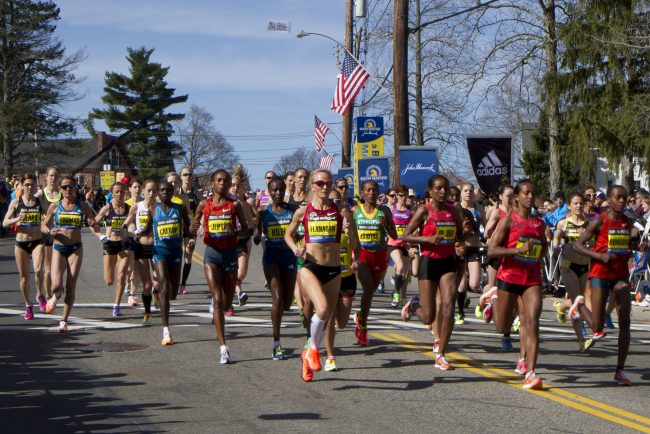42km’s Takes Its Toll, How Are You Ensuring The Best Result?
Published on
14 Sep 2015

Call us on: (03) 9975 4133
Ever since Pheidippides ran from Marathon to Athens bringing the news of the Greek victory his people had over the Persians, the gruelling 42km distance now stands as the ultimate challenge of endurance running.
Moving on from 490 BC, the 2015 Melbourne Marathon is fast approaching as our training and bodies attempt to catch up with it. With such a distance to beat, we can now start to understand why the event is such a challenge to our cardiovascular, respiratory and musculoskeletal systems a little better than the Ancient Greeks.
To give some insight into the race preparation by event organisers, the London Marathon provide:
- 2000 Band-Aids
- 40,000 foil blankets
- 1250 portable toilets
- 750 000 bottles of water
So why do we need so much stuff to get us through the race?
Footwear
Ben, our trusty podiatrist here at Pure Physio provided some great information and insight on the importance of footwear in last weeks news post. Getting the right shoe will make all the difference in preventing blisters and skin irritation, something none of us want to be feeling 30km’s in!
Runners Beware!
Keep a few Band-Aids on hand. Nipple chaffing is a notorious ailment amongst male distance athletes. For novice runners I would recommend learning from the experience of those who have fallen before and tape up. Ladies and gents, be aware of leg chaffing and wear appropriate length shorts or leggings. Ensure your chosen outfit for the day is cool and comfortable. And of course, don’t forget your sunscreen.
Keep Your Cool
Temperature regulation is one of the biggest challenges our bodies face during a marathon. Scientists have revealed athletes running under 3 hours for a marathon endure a 15-fold increase in energy production, with athletes finishing in over 4 hours maintaining a 10-fold increase in metabolism.
So if the by-product of energy production is heat, how do we keep cool?
Sweating is one of the body’s major cooling mechanisms in which the heart pumps warm blood to the skin where body heat is lost through the evaporation of sweat. Training and remaining hydrated are key factors to ensure the efficiency of this system.
- Adequate training improves the efficiency at which the heart can pump blood around the body, commonly known as stroke volume.
- Hydration ensures that there is adequate blood volume in the body to be available for this heat removal.
During a marathon an individual can expect to lose anywhere from 3.4-6 litres of sweat. Yikes. Therefore, make sure you plan and spread your fluid intake throughout the race. Ideally, fluid out needs to meet fluid in.
Save Your Energy
Many of you have probably heard of energy gels. Lets venture into the age-old question; do they work? Should you take them?
The role of energy gels is to help combat glycogen depletion and delay what runners describe as ‘hitting the wall,’ when our bodies transition from burning high performance fuel to the slow burning of fats. Runners will use up their glycogen stores within about 2 hours of running. So unfortunately, unless you are an elite runner you will have used up your glycogen stores well before hitting the finish line!
Unfortunately, gels don’t provide a simple muscle fuel replacement. The ingestion of glucose requires absorption, then the metabolism of glucose into the muscle fuel glycogen.
Therefore, timing and frequency are critical. Everyone will have a different reaction to the speed at which their bodies ingest gels ranging from 3-15 minutes, so it is always best to trial these during training pre race. It is generally recommended that athletes take their first gel 45-60 minutes into the race, and leave about an hour between consumption to ensure blood glucose levels don’t spike excessively.
Train Smart
Finally, train smart! Our muscles need to learn to tolerate forceful contractions for sustained periods of time, whilst our cardiorespiratory system has to learn to adapt to these new demands. When training, don’t forget these key factors prevent injury:
- Progressively building your mileage – have a plan
- Check your running technique to reduce your risk of injury
- Balance your running training with appropriate strength and cross training
- Check your footwear
- Listen to your body
So keep training hard and smart! The team here at Pure Physio looks forward to seeing some happy faces and bodies crossing the line at the Melbourne Marathon – catch you at the finish line!


